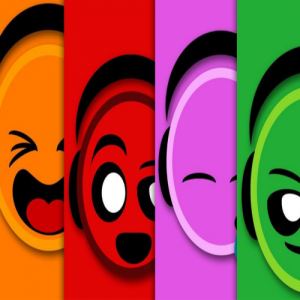I met Svetlana Ray at the Magic Slovenia Salsa Festival in January 2017 and was completely blown away. Svetlana runs her own Salsa School in St Petersburg, Russia, called the Dance High School where she teaches Salsa, investigates the process of teaching, and continually evolves to ensure students achieve their full potential.
Svetlana started dancing Salsa with Boris Hecha in 2006 in St. Petersburg and has been dancing ever since.
I had a chance to ask Svetlana Ray Three Salsa Questions
Question 1: When you started in Salsa, how much effort did you put into learning? Did you practise every day? How did you practise?
I started dancing Salsa when I was 16 years old. I came into Salsa with ballroom experience, and like most people with prior dance experience, I thought that I was already good; of course, this was not true.
Anyway, I was crazily excited about my new thing, Salsa, and spent a lot of time training. Every day, I was going directly from University lectures to the dance studio and, luckily, as I was a talented, involved and ace pupil, I had free access to studios. I would put on music and then practise everything that I had previously learned – Salsa, Reggaeton, Rumba, Pachanga etc.
I remember vividly, how I was training my turns by going from one corner of the room to the other, or stationary spins when I practised again and again. So, I was already “done” and felt sick before my actual classes even started.
At this time, I was like a maniac, training every day with passion, determination and joy.
Question 2: You engage a lot with the music? Where did this come from? Was you always this way or did it develop over time? If so, how?
I think that musicality for most people happens at a certain stage of their development, but it is not the main focus. I remember a time when I was looking at my teacher’s dancing and thinking “what the hell is he doing?”, “Why does he do such strange moves?”, only later did I understand, these “strange” moves are reflections of the music.
Musicality is a skill which comes to you when you are ready to pay attention to it. I can name the 4 dancing stages which I came through:
- Structure – realising the “rules” of Salsa dancing, how and why it works.
- Following – I remember exactly that amazing feeling of having a non-verbal conversation during the dance. Especially with foreign partners, some of whom I will not be able to talk with in everyday life. It feels like I am reading his mind – “a little faster here…and now…stop…let’s see what you will make of this…” or “oh sorry, it was my fault” – everything is clear without any word. Fantastic.
- Technique – you continue to grow, but one day you see that you are not good enough yet. Sometimes you are not fast enough to make some things with advanced partners, you still do not have enough moves for solo dancing, or you wish you could do more spins while keeping balance. The more you improve – the more joy you get just from feeling that you REALLY CAN do WHAT YOU WANT. To stop after a triple turn and do not wobble, feel each step on the floor, control and use every part of your body, and not miss anything in your subconsciousness.
- Musicality (Finally) – then I noticed that all the dances are similar. It started to become boring. Luckily, I found out about instrument patterns, song structures, famous singers, bands and since then my Salsa world has changed completely. For me, the music gives a reason to all we do and it is incredibly interesting to follow the song, discover and predict the logic, guess the accents, and reveal new tricks or connections between different tracks. That game makes every dance unique, especially when you have a partner to play with.
It is unbelievable that it takes more than 10 years to reach these “easy” and “obvious” thoughts about musicality in dancing.
Question 3: What do you enjoy the most about dancing Salsa? Can you describe your personal magical dancing experience?
Sooooo apparently you may guess musicality is a major part of Salsa dancing; what makes me happy is musicality and interaction with the music.
Another thing which is thrilling for me is the interaction with a Man in dancing. It is difficult to describe and even more difficult to find, but I had a few dances which were …oh…
In those times, you do not just feel like a Dancer, Technical Partner, like a part of the Music, but also like a Woman; I would be happy if ladies describe in the comments (below) if they know what I mean. My most magical dance experience was exactly like this – and now we have this “experience” together for two years. 🙂
Advice for new dancers?
Be patient. Do not believe that it is possible to learn Salsa in 6 months. Even if you have dancing experience, your body needs time to adapt to new moves; you will also need to be ready to learn new skills and rearrange the neurones in your brain.
Imagine, that for the 30 years (if you’re 30) your muscles had no idea that they could move like this or that they even existed. 🙂 So it is not about learning how to dance, it is about learning how to learn and how your body works. So be patient.





Leave a Reply